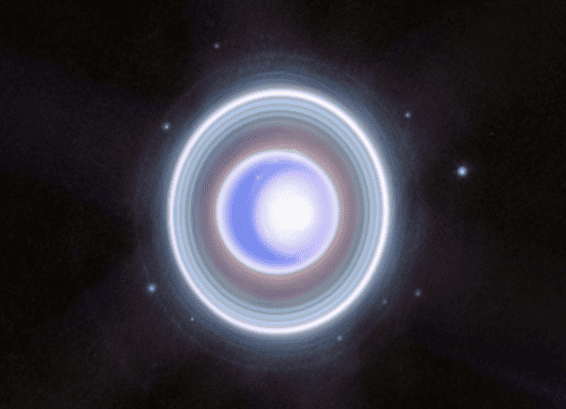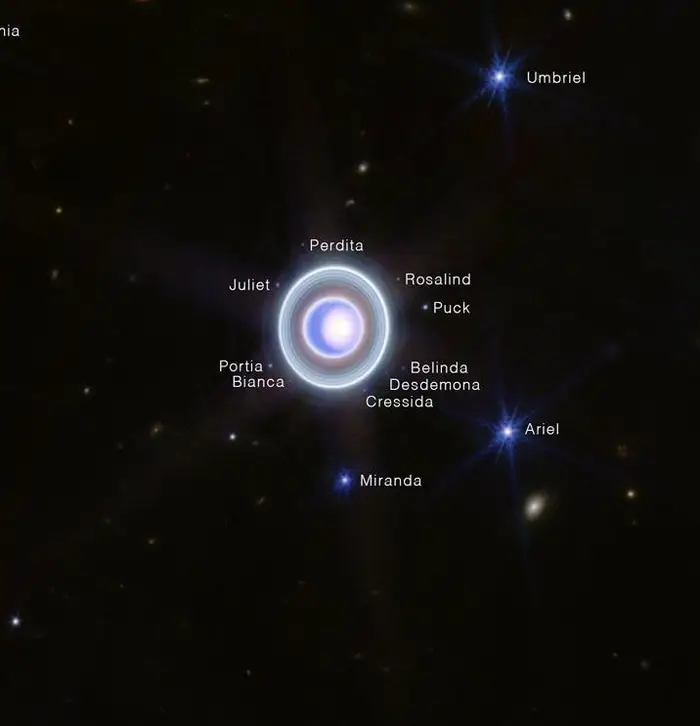
The James Webb Space Telescope (JWST) has delivered a striking new image of Uranus, revealing aspects of the ice giant that remained unseen in its initial close-up over 30 years ago. This new vibrant portrait highlights Uranus’s often-overlooked rings, moons, and atmospheric conditions.
Rewind to 1986 when Voyager 2 flew past the seventh planet from the Sun and Mr. Mister lit it up on the music charts. At the time, Uranus appeared as a tranquil, solid blue sphere. Fast forward to today, and Webb’s infrared capabilities paint a different picture: a vibrant, dynamic ice giant, bustling with atmospheric activity. This infrared allows it to observe features invisible to other telescopes, bringing to light the dynamic nature of Uranus.
The images showcase the faint inner and outer rings of Uranus, including the rarely seen Zeta ring — a faint, ethereal band closest to the planet. Webb also brought into focus many of the planet’s 27 known moons, including some that hiding within the rings.

A standout feature in the new image is Uranus’ bright white north polar cap, which becomes more prominent as the planet nears its solstice in 2028. Uranus’ unique 98-degree axial tilt results in extreme seasonal variations, with one pole enjoying continuous sunlight for a quarter of its year while the other experiences a 21-year-long dark winter. This phenomenon makes observing atmospheric changes, like the storms visible near the polar cap, particularly intriguing for astronomers.
Uranus’ rapid rotation, completing a day in just about 17 hours, poses a challenge for observing atmospheric features, which can shift within minutes. But Webb’s capability to take both long and short exposures has enabled astronomers to discern unprecedented details of the planet.
Since no spacecraft has yet approached the icy giants Neptune and Uranus other than Voyager 2, many questions concerning these planets remain unanswered. A strange ‘blip’ in Voyager 2’s data indicates the spacecraft encountered a magnetic bubble in Uranus’s atmosphere, and X-rays originating from the planet have only added to the fascination.









